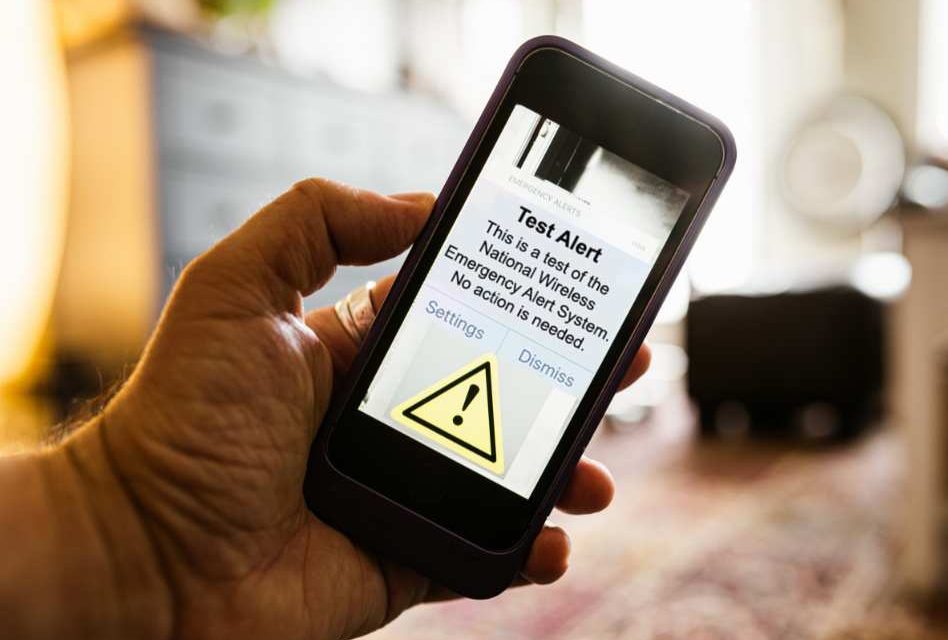Why Did Your Phone Make an Alarming Noise on Wednesday Afternoon?
Introduction
Have you ever experienced a sudden and alarming noise coming from your phone? If you did, you’re not alone. On Wednesday afternoon, many smartphone users across the United States were surprised by a loud noise that came from their devices. This unexpected event left many people wondering why their phones made such a sound. In this article, we will explore the reasons behind this unusual occurrence and shed light on what it means for smartphone users.
The FEMA Test
The source of the alarming noise on Wednesday afternoon was a test conducted by the Federal Emergency Management Agency (FEMA). FEMA is responsible for coordinating responses to disasters and emergencies in the United States. The agency periodically conducts tests to ensure that the emergency alert system is functioning properly and that people can receive important messages during critical situations.
The Purpose of the Test
The primary purpose of the FEMA test is to assess the effectiveness of the Wireless Emergency Alert (WEA) system. The WEA system allows authorized government agencies to send text-like messages to all compatible smartphones within a specific geographic area. These messages are meant to inform people about imminent threats to their safety, such as severe weather conditions, natural disasters, or national security emergencies.
How the Test Works
During the FEMA test, a special message is sent to all smartphones connected to participating wireless networks. This message triggers the devices to emit a loud noise and display an alert notification. The noise, often described as a loud tone or blaring sound, is designed to grab the attention of smartphone users and prompt them to read the accompanying message.
The Test Schedule
The FEMA test on Wednesday afternoon was scheduled to take place at precisely 2:20 PM Eastern Time. This specific time was chosen to ensure maximum reach and participation across different time zones within the United States. By conducting the test during the day, FEMA aimed to reach a wide audience and gather valuable data on the performance of the WEA system.
The Importance of the Test
The FEMA test serves several important purposes. Firstly, it allows government agencies to evaluate the effectiveness of the emergency alert system and identify any potential issues or areas for improvement. By conducting regular tests, FEMA can ensure that the WEA system is reliable and capable of delivering critical information to smartphone users in a timely manner.
Public Awareness and Preparedness
Another crucial aspect of the FEMA test is to raise public awareness and promote preparedness for emergency situations. By receiving the loud noise and alert notification on their smartphones, people are reminded of the importance of staying informed and being prepared for potential emergencies. This test serves as a reminder to review personal emergency plans, sign up for local alert systems, and take necessary precautions to ensure personal safety.
The Role of Wireless Carriers
Wireless carriers play a vital role in enabling the FEMA test and ensuring that the emergency alert messages reach all compatible smartphones. These carriers have partnered with FEMA to implement the WEA system and distribute emergency alerts on their networks. Through this collaboration, wireless carriers contribute to the overall preparedness and safety of the communities they serve.
The Limitations of the WEA System
While the WEA system is a valuable tool for disseminating emergency information, it does have some limitations. One of the main limitations is the inability to target specific geographic areas with precision. Due to technical constraints, the WEA system sends alerts to all compatible smartphones within a designated area, regardless of their location within that area. This can sometimes result in people outside the affected region receiving unnecessary alerts.
How to Opt Out of Emergency Alerts
If you find the loud noise and alert notifications from emergency tests or alerts to be disruptive or unnecessary, you have the option to opt out of receiving them. Most smartphones allow users to customize their emergency alert settings and choose which types of alerts they want to receive. However, it is important to consider the potential consequences of opting out, as emergency alerts are designed to provide critical information during life-threatening situations.
Conclusion
The alarming noise that came from your phone on Wednesday afternoon was a result of the FEMA test, conducted to evaluate the effectiveness of the Wireless Emergency Alert system. This test serves to ensure that the emergency alert system is functioning properly and to raise public awareness about the importance of preparedness during emergencies. While the loud noise may have startled some smartphone users, it is a necessary reminder of the role technology plays in keeping us informed and safe.




